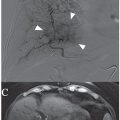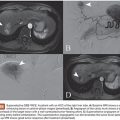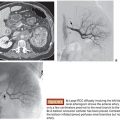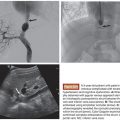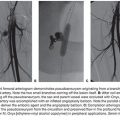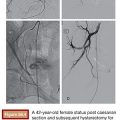Gary P. Siskin • John C. Dalfino
The growing role that embolotherapy has been playing in medical care should be apparent to all practicing interventionalists. As embolization procedures continue to either replace or play an adjunctive role to existing medical and surgical therapy, it becomes incumbent on those performing these procedures to assume the role of a treating physician and to assume significant responsibility for the care of these patients. This is the cornerstone of a true embolization service.
Physicians participating in an embolization service must have a complete working knowledge of the indications and contraindications for these procedures, the applicable vascular anatomy, the technical steps of the procedure, the embolic agent(s) and other equipment being used, the expected outcomes, and the potential complications and how these complications are best managed. This is a big task because embolization procedures are performed for various conditions falling under the domain of so many different medical specialties. In other words, the individual specializing in interventional oncology and spending much of his or her time performing procedures such as chemoembolization or radioembolization may not have the same degree of knowledge in the neuro or gynecologic applications of embolotherapy. The physicians performing these procedures must recognize these limitations if they are seeking to grow their practice into different areas. The technical skill-set and familiarity with embolic agents may be there, but a commitment must be made to the additional work required to claim the same degree of expertise as those regularly performing these procedures.
The knowledge base is only one part of this, though. For a successful embolization service to be in place within a hospital, interventionalists must make a true commitment to the care of these patients and the development of these procedures. Although it has been said frequently in recent years, no physician understands the role of and potential issues surrounding embolization procedures better than the person performing the embolization procedure. It is unreasonable to expect a gynecologist caring for a patient with fibroids undergoing a uterine artery embolization procedure, an oncologist caring for a patient undergoing chemoembolization, or a pulmonologist caring for a patient with a pulmonary arteriovenous malformation (AVM) undergoing embolization to understand the technical challenges, expected outcomes, and potential complications of the procedure better than an interventionalist. This fact alone should provide the justification for any interventionalist performing embolization procedures to be actively engaged in the longitudinal care of his or her patients.1
But there is more. Embolization has become the primary therapeutic options for so many different conditions, and as such, it is just inappropriate for the physician providing a therapeutic service to not be a part of the preprocedure and postprocedure care of his or her patient. This continuity of care is of course good for patients because the person with the most expertise with the procedure is keeping an eye on them. It is, however, also good for the physician. It is not possible to have a preprocedure conversation with a patient regarding expected outcomes and potential risks if one does not personally provide follow-up care. Without a suitable amount of postprocedure experience, one can never gain the familiarity with outcomes and complications to enable this type of conversation to take place. Therefore, this becomes inappropriate care and will likely form the basis for others to become actively engaged in embolotherapy.
All of this lends support to what is now becoming a mandatory clinical practice model for interventionalists performing embolization procedures. Interventional radiologists continue to be the specialists performing the largest volume of embolization procedures, but like so many areas under the heading of endovascular care, this is changing. A growing number of vascular surgeons, neurosurgeons, neurologists, and nephrologists are incorporating embolization into their procedural skill-set, and managing an entire episode of care is fundamental to their respective clinical practices. Although this is being increasingly recognized by interventional radiologists, there are some physicians who continue to either disagree with this model of practice or are not given the resources and/or support from their diagnostic radiology colleagues to become actively engaged in direct patient care. At some point, these physicians will have to make a decision regarding whether or not it is appropriate for them to continue performing these procedures. Longitudinal patient care is that important.
THE OUTPATIENT OFFICE
For most procedural specialists, the outpatient office forms the core of their practices. An increasing number of procedures are originating in the outpatient setting; therefore, an office must be available for an episode of care involving embolization to begin. The office is where patients are initially assessed and counseled, where arrangements are made for office or hospital-based procedures, where billing originates from, and where patients are seen in follow-up after procedures are performed.2 One need only take a quick look at this markedly consolidated list to understand that these items are difficult to administer from the confines of a fluoroscopy suite. Therefore, the core of an embolization service must take place in a dedicated office space in the community or hospital setting.
The physical space for an outpatient office represents only one part of this effort when establishing an embolization service. Successful practices are built around practitioners and staff who fully understand and appreciate the nuances of these procedures. Nurse practitioners3 and physician assistants4 have been playing an integral role within interventional practices for the past several years and will continue to do so. In the authors’ experience, these individuals are able to provide not only procedural assistance but also can truly be a valuable link between patients and the practice as they go through their procedural recovery. It always helps patients to know that they have points of contact within a medical practice should they have questions or concerns, and physicians who are able to share this responsibility with others are more likely to bring success to their entire practice in this area. Additional aspects of an outpatient office range from the office staff such as nurses, receptionists, and billing personnel to the computer-based electronic medical records that are prevalent today. These services need to be in place to ensure appropriate communication with referring physicians, consulting services, hospitals, and third-party payers.
PREPROCEDURE ASSESSMENT
Despite the different specialty backgrounds of physicians performing embolization procedures, these individuals are all asked in one manner or another to consult on a patient with a medical problem that may benefit from the procedures they offer. Keeping in mind the earlier point about who actually has the expertise about embolization procedures, it becomes the consultant’s responsibility to answer the referring physician’s questions and to determine if a patient is or is not a candidate for an embolization procedure. This commonly involves reviewing medical records, radiologic images, lab work, and the notes from previous procedures. An infrastructure must therefore be in place to ensure that this information is available for review at the time of an initial consultation. This information is often enough to determine a patient’s candidacy for embolization.
A discussion must then take place to review the decision-making process for determining why a patient is a candidate for embolization and why that procedure is being recommended. The procedure should be reviewed in its entirety with the patient, especially if they may be only minimally sedated; they will likely be more comfortable if they know what is happening. Almost more importantly, expectations for recovery should be reviewed as well. Patients undergoing embolization often have the idea that a “procedure” such as embolization cannot possibly be associated with a difficult recovery period (“it is not surgery”). Although this may be true in some instances, the various chapters in this textbook clearly demonstrate that the recovery after some embolization procedures may be difficult for these patients and the families caring for them. The expected postprocedure symptoms, the duration of this recovery, and the ways to get in touch with staff at all hours of the day need to be reviewed with patients and their families.
The final step in this preprocedure consultation is to be certain that patients understand not only the procedure but also the role that this procedure is playing in the overall management of their condition. For some patients, surgery may follow an embolization procedure, whereas for others, particularly in the area of interventional oncology, liver-directed therapy may be followed by surgical or medical therapy. Patients need to understand when embolization is a stand-alone treatment and when it is one step in a long process involving many treatment strategies offered by many different physicians. The same conversation should be had with the physician referring the patient to your service because they should also understand when additional therapy may or may not be required after embolization. This is important in both the inpatient and outpatient setting.
PROCEDURAL CARE
Stay updated, free articles. Join our Telegram channel

Full access? Get Clinical Tree


